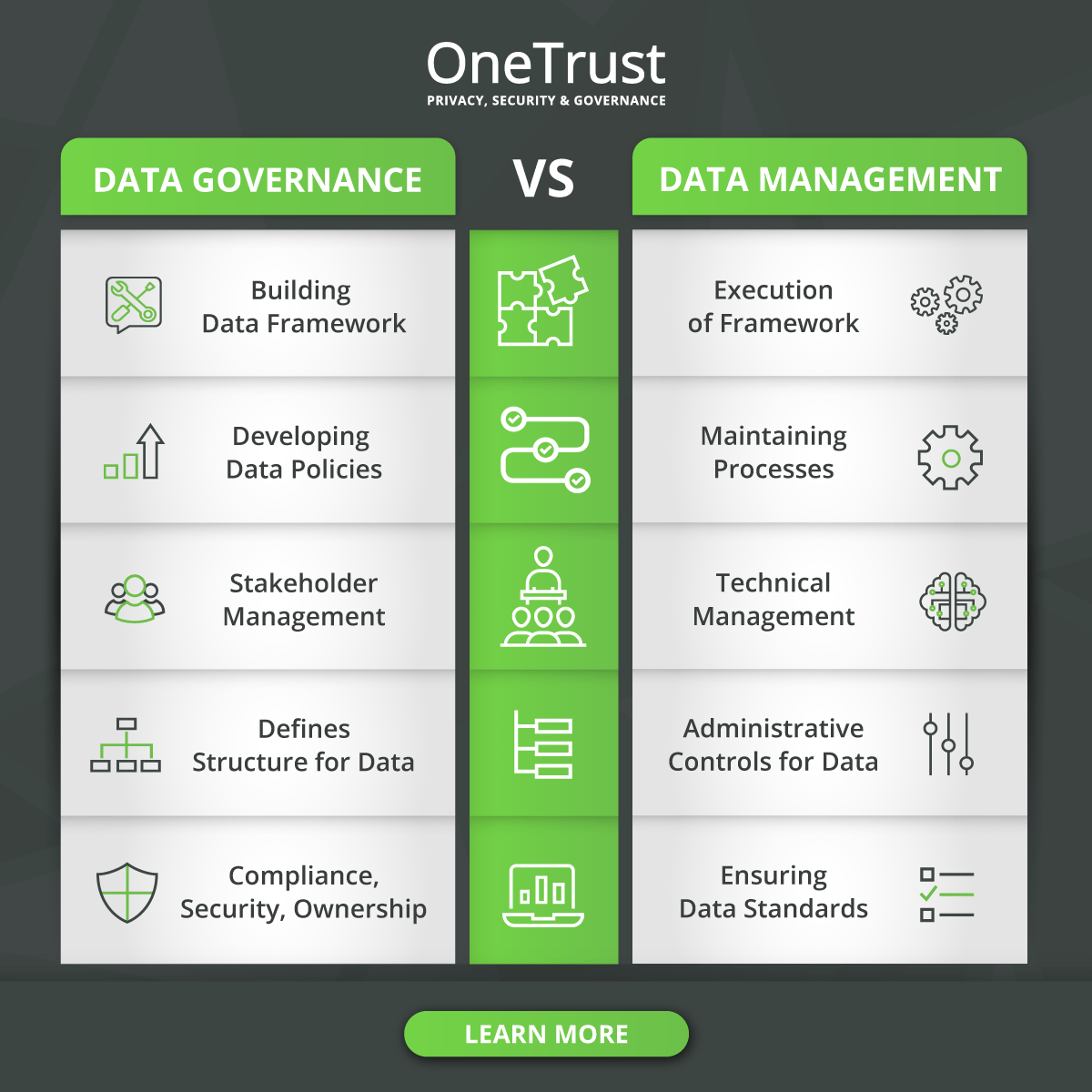Introduction:

Image: www.onetrust.com
Are you ready to embark on a journey that will revolutionize how you manage and empower your organization through data? Data governance is the key to unleashing the full potential of your data, and initiating a program can be a game-changer. In this comprehensive guide, we will guide you through every step of starting and maturing a data governance program, empowering you to transform your organization into a data-driven powerhouse.
Defining Data Governance and Its Role
Data governance is the framework that provides a common understanding of how data is valued, managed, and shared across an organization. It’s not just about enforcing rules but also about fostering a culture of data stewardship, where everyone in the organization recognizes the importance of reliable, accessible, and secure data.
The Pillars of a Successful Data Governance Program
1. Vision and Culture: Establish a clear vision and foster a culture that values data as an asset. Introduce clear goals, roles, and responsibilities to ensure all stakeholders understand their contributions.
2. Data Management Infrastructure: Create a technical foundation that supports data quality, security, and governance initiatives. This includes data warehouses, data lakes, and data integration tools.
3. Business Glossary and Metadata: Define common definitions of data elements and terms used throughout the organization. Metadata is essential for understanding the context and usage of data.
4. Policies and Standards: Draft written policies and procedures to guide data usage, access, and security. These policies should be regularly reviewed and updated as needed.
5. Technology and Tools: Implement technology solutions that automate and streamline data governance tasks. Tools can help with data profiling, data lineage tracking, and security management.
6. Data Quality Management: Develop and enforce data quality standards to ensure accuracy, consistency, and reliability. This involves defining data quality metrics and implementing data validation processes.
7. Data Security and Privacy: Establish robust measures to protect sensitive data from unauthorized access and breaches. This includes encryption, access controls, and data retention policies.
Implementing Your Data Governance Program
1. Establish a Data Governance Committee: Form a cross-functional committee representing business, IT, and data management to oversee the program. The committee should have executive sponsorship.
2. Develop a Data Governance Framework: Create a comprehensive framework that outlines policies, processes, and standards for data governance. This framework should be communicated organization-wide.
3. Train and Empower Data Stewards: Identify and train data stewards who are responsible for managing data assets and enforcing policies. Empower them with the tools and resources they need to succeed.
4. Monitor and Evaluate: Regularly monitor the effectiveness of your data governance program and make adjustments as needed. Conduct audits, collect feedback, and review key metrics to track progress.
![[Infoblog] Why you should consider Data Governance - Calsoft Blog](https://www.calsoftinc.com/blogs/wp-content/uploads/2021/01/Data-Governance-Infoblog-Final.png)
Image: www.calsoftinc.com
Expert Insights and Tips
“Data governance is not a one-time implementation; it’s an ongoing journey of cultural transformation. By continuously improving your program, you can maximize the value of your data.” – Jessica Dzieza, Data Governance and Data Quality Advocate
“Data governance is more than just compliance. When done right, it can enable innovation, improve decision-making, and drive organizational success.” – David Loshin, Data Governance expert
How To Start A Data Governance Program
Conclusion
Embarking on a data governance program is a transformative journey that requires dedication, collaboration, and a commitment to data-driven excellence. By following the steps outlined in this guide, you can establish a solid foundation for effective data governance in your organization. Remember, it’s not just about controlling data but about empowering your people and unlocking the full potential of your most valuable asset – your data.